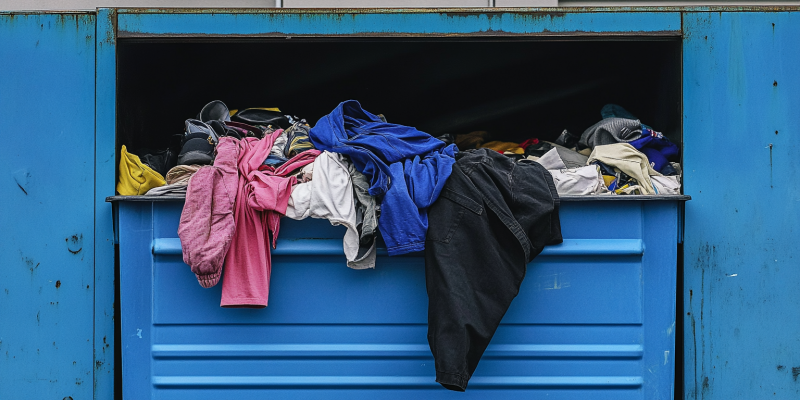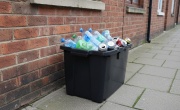Expanded EU textile policies could cut 5.4 million tonnes CO2 annually
European Commission study examines three policy interventions to enhance textile waste management as new collection obligations take effect across EU Member States.
 With EU Member States now required to establish separate textile collection systems following the revised Waste Framework Directive, the European Commission has published a detailed feasibility study exploring three key policy interventions aimed at transforming textile waste management.
With EU Member States now required to establish separate textile collection systems following the revised Waste Framework Directive, the European Commission has published a detailed feasibility study exploring three key policy interventions aimed at transforming textile waste management.
The Joint Research Centre report evaluates fiscal incentives, enhanced separate collection systems, and mandatory information policies as potential solutions to address the mounting environmental impact of Europe's textile consumption.
According to the European Environment Agency textiles consumption is at the highest level since 2010, with per person consumption going up from 17 kg to 19 kg between 2010 and 2022.
The assessment presents scenarios requiring investment levels ranging from €9.2 billion to €44 billion depending on intervention ambition. While the proposed solutions carry significant economic costs, they deliver substantial environmental benefits.
Combined policy measures could reduce textile waste greenhouse gas emissions by 4.5 million tonnes of CO₂-equivalent annually, the report finds. More ambitious scenarios involving waste prevention could achieve reductions of up to 26 million tonnes CO₂-equivalent per year, highlighting the potential for interventions.
Fiscal incentives to target market failures
The study identifies fiscal incentives as essential tools to overcome market failures that currently prevent large-scale textile recycling and reuse operations.
These financial measures include subsidies, grants, tax credits and output-based support designed to make textile recycling, sorting, reuse and repair economically competitive with virgin material production.
The interventions address coordination failures where recycling remains uneconomical due to insufficient scale, learning externalities where early adopters bear costs that benefit later entrants, and environmental externalities where virgin material prices fail to reflect their true environmental costs.
Implementation options include project-based investment support providing one-time grants for new facilities, capital cost subsidies covering percentages of infrastructure investment, and output-based payments per tonne of recycled materials. VAT reductions on recycled products could enhance market competitiveness against virgin alternatives.
The report estimates project-based investment support over 10-15 years would require €2-6 billion total public funding. Output-based subsidies for recycled fibres would cost €100-700 million annually, while sorting subsidies could reach €300-800 million per year.
Transitioning to ambitious fibre-to-fibre recycling scenarios would necessitate approximately €19 billion in additional infrastructure investment across the EU.
However, implementation faces significant challenges. High public funding requirements create budget pressures, while market uncertainties risk overinvestment in unproven technologies. Output subsidies prove complex to administer given varying quality and composition of recycled materials.
Collection systems require major investment
Improved collection systems focus on strategies to increase quantity, quality and convenience of separate textile waste collection through minimum collection convenience requirements and deposit-refund schemes.
Implementation methods include increasing collection points in accessible retail and residential areas, introducing door-to-door kerbside pickup especially in urban zones, and establishing deposit-refund schemes for textiles..
These systems aim to achieve collection rates exceeding 90 per cent for targeted materials while creating predictable waste streams that improve downstream sorting and recycling economics.
However, the research estimates deposit-refund systems would increase textile collection costs by factors of two to three, potentially reaching €1,000 per tonne compared to current systems operating at approximately €350 per tonne.
Infrastructure requirements including reverse vending machines, logistics networks and validation systems prove expensive and technically complex. Rural collection costs run approximately 50 per cent higher than urban areas due to transport inefficiencies.
Barriers to participation are also highlighted as a particular issue with these interventions, as consumers would be required to know how to participate, trust systems, and receive proper incentives.
One solution suggested is for further public-private collaboration involving municipalities, retailers and social enterprises that would support collection scheme operations.
Information policies face behavioural barriers
Mandatory information policies require producers or retailers to provide standardised, verifiable and accessible information about recycled content, waste management instructions and sustainability attributes through product labelling, digital product passports, in-store displays and online disclosures.
Proposed applications include labels for recycled fibre percentages, standardised disposal guidance on how to return or dispose of textiles, consumer education campaigns on sustainable consumption and correct disposal, and digital tools like QR codes providing material composition, repairability and recyclability data.
The policies aim to help consumers make informed choices about products with lower environmental impact or higher circularity while boosting demand for recycled content through clear labelling.
However, implementation challenges include establishing trust and comprehension as labels must be credible, understandable and trusted to avoid consumer ignorance amid information overload or greenwashing scepticism.
Information alone often fails driving behavioural change without supporting social norms or economic incentives, with effectiveness varying across demographic, cultural or socioeconomic groups.
The study notes that consumers' purchasing behaviour remains heavily influenced by price, quality and fashion trends, with sustainability considerations often secondary despite stated preferences.








